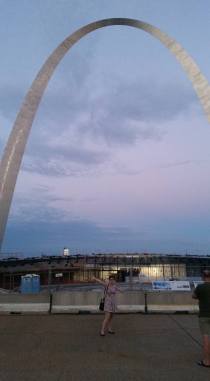The Symposium is now in its fifth year and its stated aims are: to provide a convenient summer venue in North America for scholars in all disciplines to present papers, organize sessions, participate in roundtables, and engage in interdisciplinary discussion. The promotion of serious scholarly investigation into the medieval and early modern worlds was at the heart of this Symposium.

We formed a panel entitled ‘Interacting with Saints and Shrines: Text, Image and Material Cultural’. The session explored engagements with cults and shrines in a variety of contexts and media, with specific focus on the cult of St Æthelthryth of Ely; the Cistercian Order in the twelfth century; and southern Italian shrines in the high Middle Ages. The papers demonstrated how images, material culture and texts were utilised to portray saints and engage with the lay communities, thus ensuring that the religious institutions’ messages were heard and disseminated. Thanks to conference travel grants from CeSMA, the Royal Historical Society, and Midlands3Cities, we were able to participate in this international conference to present the paper and take advantage of the networking opportunities offered by this established Symposium.
The meeting included plenary sessions by Bruce Campbell, Christopher Baswell and Damian Smith. Campbell’s talk entitled ‘Unemployment, Leisure and Industriousness in Late-Medieval and Renaissance Europe built on the work of Phelps Brown and Hopkins from the 1950s which profiled daily wages from 1250 through to 1900. He advocated a more nuanced approach which incorporated detail relating to gender and geographical differences and the variation between real and nominal wages, highlighting anomalies in the traditionally held view. Baswell examined the depictions of disability in thirteenth century Arthurian romance literature, which up to now has been underexplored in scholarship and encouraged further work in the field. While Smith expanded on his current topic of research on James I of Aragon by considering the existing scholarship surrounding his legitimacy to the crown of Montpellier.
Unfortunately, several speakers were unable to attend which resulted in a number of panels containing only one or two papers. However a wide variety of subjects were explored in the papers we attended. Burnam Reynolds explored the appearance of celestial beings at the battle of Antioch and considered how and why such an account was accepted in Western Christendom; whether the Turin shroud was included in the booty from the fourth crusade was addressed by Thomas Madden; the change in crusading policy by Gregory X following the death of Louis IX was examined by Samantha Cloud; Cathleen Fleck analysed the depiction of Robert I of Naples as King Solomon in the Anjou bible, suggesting that it was an attempt to reinforce his rule on the Italian peninsula; and Anne Carmichael argued that the plague policy in 15th century Milan was not imposed from above but a result of a collaboration between the community and health officials. Throughout the Symposium the importance of best practice in presentation technique became evident as we observed the different styles used by the speakers.
The atmosphere throughout the conference was

collegiate with receptions on each evening providing the opportunity to discuss papers and research projects further. We have appreciated the chance to attend and present at this established Symposium and look forward to incorporating some of the ideas and methodology into our own research.
by Georgie Fitzgibbon
